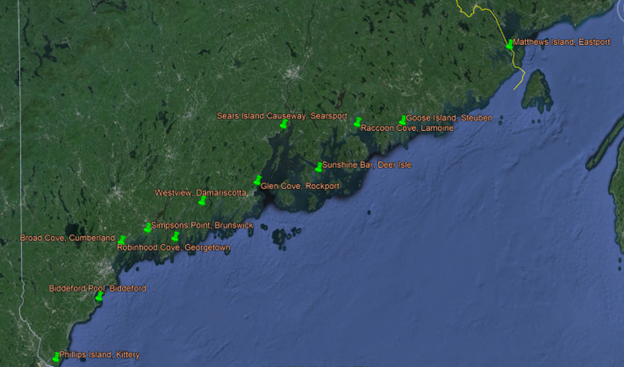By Meredith White, Marine Resource Scientist IV
The Nearshore Marine Resources Program Team has been busy launching their new initiative of Long-Term Intertidal Monitoring. This monitoring is set up to initially gather baseline ecological data along the coast, and as we move into the future, will ideally link ecological changes along the coast to environmental changes such as warming waters.
Twelve locations have been selected along the coast, representing a variety of conditions and the presence of different species. These conditions include flats that are open to shellfish harvesting as well as closed to harvest, inlets that are extremely sheltered, and those that are exposed. Each site will be visited monthly and quantitative surveys will be conducted.
In alternating months, surveys will be conducted for infaunal species (softshell clams, quahogs, razor clams, surf/hen clams, blood worms, sandworms, milky ribbon worms) or species living on hard substrates (rockweed, American oysters, European oysters, blue mussels, periwinkles, dog whelks). Surveys for green crabs and other crab species will be conducted monthly, as these mobile organisms are expected to show more seasonal variability.
Additionally, during these quantitative surveys for the above target species, the presence of all other (non-target) species will be noted within survey areas. Initially, these surveys will show us the difference in species distribution geographically across the state, and over time, they will allow us to monitor changes in the abundance and distribution of intertidal species throughout the state.
Additionally, we will deploy temperature loggers just below and just above the surface of the mud to log both the mud temperature and the water/air temperature. Grant funding has been awarded through the Casco Bay Estuary Partnership Resilience and Monitoring Grant Program to purchase salinity and dissolved oxygen sensors to deploy in Brunswick and Cumberland. These sensors will be used as a pilot project to determine their suitability for intertidal deployment.
If successful, additional funding will be sought in the future to expand this data collection to other monitoring sites.

No comments:
Post a Comment